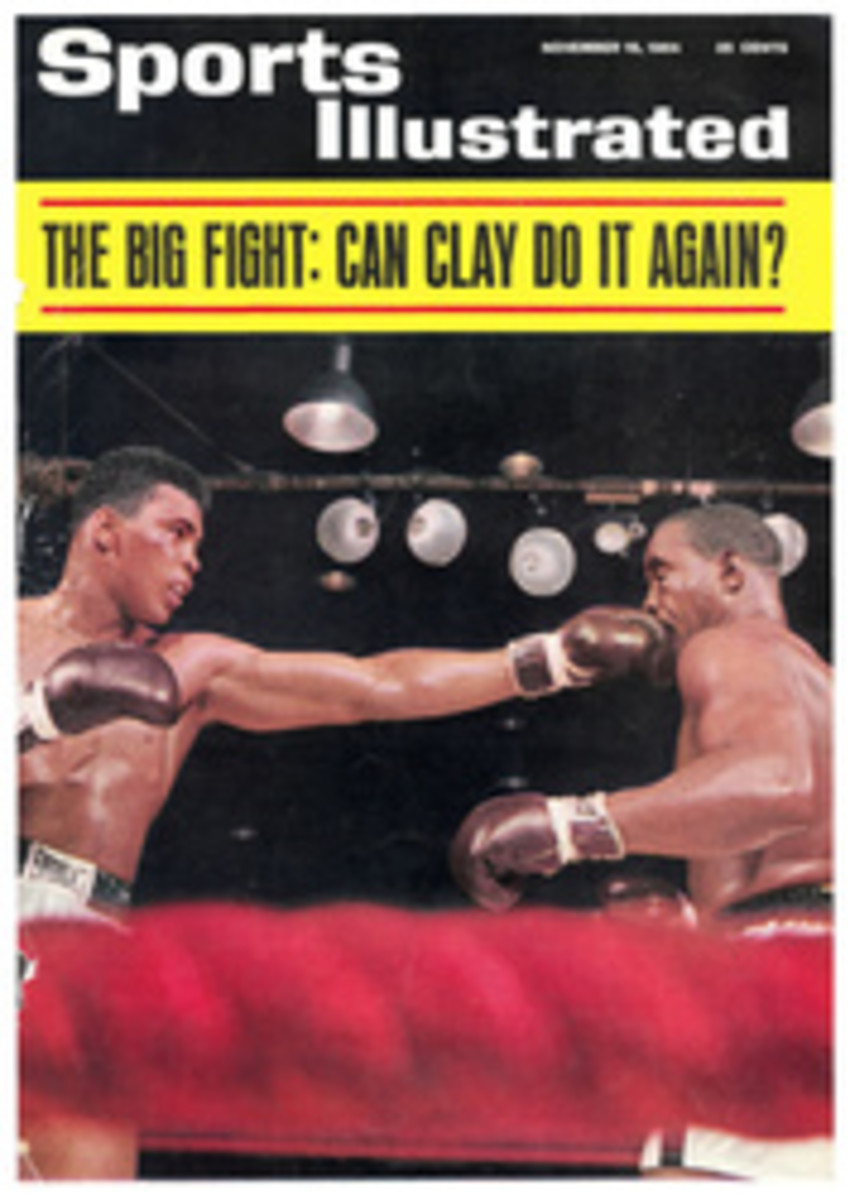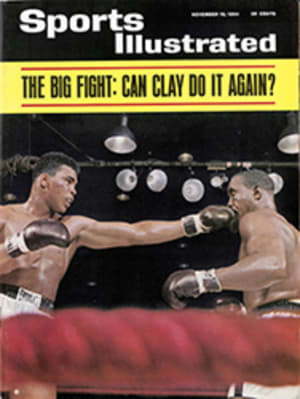
Some little men who think they are Packers
Mention Ohio State or Notre Dame around Springfield, Ohio, and you will get most respectful attention, as is befitting their high station in the football world and their neighborly proximity. Mention Wittenberg University and chances are someone will buy you a drink. And mention the name of Charlie Green and you will be saluted by a peal of bells from every one of the town's 143 churches. For Charlie Green is to small-college football what Tulsa's Jerry Rhome (page 28) is to the majors. If Green's seasonal statistics are not quite as sensational as Rhome's, his career totals are and, like Rhome's, they are indebted at least in part to pro-style, two-platoon football.
Unlike Tulsa, however, Wittenberg traces its enthusiasm only partially to recent events. The college's football fever can also be accounted for by a feat that took place during the early part of the century. An undergraduate named Samuel Alfred Ort (he was later to become Wittenberg's fourth president) in a moment of madness booted a football up and over all five stories of Myers Hall, the building that served as the school's dormitory, classroom, social center and administration office. Since that time Wittenberg has had the idea that football was invented there.
Last week Wittenberg once again bolstered that improbable idea. By defeating Wabash College 42-7, the school finished its third consecutive undefeated season, and you have to go back to 1959 to find a year in which the little monster lost more than one game. Not only did the win over Wabash make Wittenberg's season perfect, it made Wittenberg the first team ever to win the small-college national championship three times in a row. There are, of course, tangible reasons why tiny Wittenberg has been able to carry on in such a fashion. One is Bill Edwards, a sort of hybrid Santa Claus and Genghis Khan who came back in 1954 to coach the university from which he had graduated 23 years before and managed to convince his slightly smallish players that they were all prime draft material for the Green Bay Packers. The fact that they are no such thing has nothing to do with it. The players think that they are and most of the time play as though they are.
And lately there has been Charlie Green, and he, for one, may actually have all the requisites necessary to play for the Packers—except about 20 pounds and a big-college press agent. Green undoubtedly is the year's best small-college quarterback and possibly one of the best in any category—big or small. His most imposing credential is a right arm that can get rid of a football so rapidly and with such accuracy that one opposing coach insists he is being aimed by an IBM computer. He completed 117 passes this year, including one good for 77 yards—50 of them in the air. All told, Green's passes have produced 21 touchdowns and 1,811 yards. For his college career Green has 325 completions for 5,575 yards and 53 touchdowns, against almost no interceptions.
In addition to Green's accomplishments, however, Wittenberg prizes other assets: four very fast and capable ends, including Ron Duncan, who at 6 feet 6 and 225 pounds stands out like a buffalo in a poodle kennel; an offensive line that has played together for four years; and a young defense that, after a rather woolly opening game, gave up just five touchdowns for the rest of the season.
Perhaps the most puzzling aspect of this extraordinary football school is not the team but the campus. You might expect it to be about as arresting, architecturally, as a defense factory turning out lethal weapons. Not Wittenberg. It is small, neat and tree-lined, like a campus should be. The United States Information Agency has, in fact, filmed Wittenberg for the purpose of showing the world just how a small coeducational liberal arts university looks. Most of the time the 2,100 students work hard at a rather demanding curriculum and otherwise go to dances and paint the noses of freshmen green when they catch them without their beanies.
When it comes to football, however, nothing is normal. While other schools go about trying to win old oaken buckets or little brown jugs, Wittenberg gets a skull every time it beats Ohio Wesley-an. The skull was dug up under the Wesleyan field and though it is said to be Indian in origin, there are those who say it looks suspiciously like a Wittenberg receiver who dropped a pass in the end zone.
It has not always been thus. For a terrible decade (1942-52) Wittenberg was a loser. The community fell into deep gloom, and people began to find other things to do on Saturday afternoons. You could, in effect, stuff the entire homecoming crowd into a Volkswagen.
And then, after years of working hard at ruining his stomach with such teams as the Cleveland Browns and Vanderbilt, Bill Edwards returned—with fond memories of a low-keyed recruiting system (coaches are not allowed to leave the campus to woo talented high school players—good ones just turn up at practice and say, "O.K. to try out, Coach?") and a fierce and winning tradition.
The opening day of practice, however, nearly sent Edwards back to the big time. When he told his stalwart crew, "We are going to work, butt heads and win," he was greeted with knowing winks, and one player, he recalls, "even had the gall to laugh out loud." It took just one afternoon to stop the winking. "It was," admits one former player, "hard on the bones." Not even the trousers Edwards wore, which would have been oversized on King Kong, were good for a snicker after that. As for small-college laggards, they got the same treatment as those at Vanderbilt. One in particular caught Edwards' eye and he bellowed, "Get that pinhead off the field. Get someone in there who wants to play."
"That's your son, Coach," an assistant informed him.
"Oh," said Edwards. "Well, get him out of there anyway. He isn't doing the job."
So direct an approach had an instantaneous effect, and Wittenberg had immediate if not overwhelming success. The latter did not come until the middle of the 1961 season, when Edwards' regular quarterback sprained an ankle. He had no choice then but to look Charlie Green right in the eye, take a deep breath and say, "You start."
"Green weighed 145 pounds," Edwards says, "and when he showed up for practice on opening day I thought someone was joshing me. Then I saw him throw a ball. I went right over to my backfield coach and told him to get that skinny kid ready."
Green was ready with two touchdown passes. That was 29 games ago and Wittenberg has not lost since. To go farther back. Green was the quarterback for a high school team that went 10-0 in his junior and senior years. In other words. Green hasn't started in a losing game in six years.
Wittenberg did have one close call this season. In its opening game with Baldwin-Wallace, Wittenberg trailed 26-14 with just six minutes left to play. Then came three significant developments. Green ran for a touchdown, the defense came alive and stopped Baldwin-Wallace cold and Green threw the deciding touchdown pass with only 15 seconds to play for a 28-26 win. After that nothing in the way of small-college teams could handle Wittenberg at all and the scores became 40-6, 49-0, 7 (oops)-0, then 35-0 40-14 and 40-7.
Did such a record reassure Edwards in the game last week with Wabash? Not much. First off, Wabash had let it be known that it did not think Wittenberg was invincible and had painted several signs on the home campus to prove it. Even more to the point was a pass defense that had not allowed a single touchdown all year and, finally, Green had a slightly sprained ankle. Green scored a touchdown in the first quarter and passed for another in the second. Still, it looked suspiciously like a ball game, with Wittenberg holding a 14-7 lead at the half.
"What happened during half time?" someone asked Green later. "I got sick," he said. Whatever he did, it worked. Green came out and immediately scored another touchdown, threw for two others, and about all that Wabash had left at the end were those signs saying: "Who says Wittenberg is invincible?"
PHOTO
CHARLIE GREEN THROWS AGAINST AROUSED BUT OUTMATCHED WABASH DEFENSE

